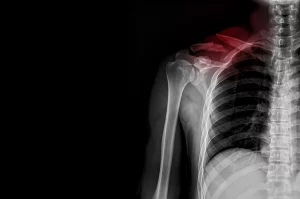 Picking up and taking your pup to the dog park is a great opportunity for exercise and socialization for you both, but sometimes the experience doesn’t live up to its potential because of place, pets, and people. Good offers these tips for making the best of an outing to the dog park with your best friend.
Picking up and taking your pup to the dog park is a great opportunity for exercise and socialization for you both, but sometimes the experience doesn’t live up to its potential because of place, pets, and people. Good offers these tips for making the best of an outing to the dog park with your best friend.
- Sniff out a great spot! Know the necessities of a good dog park and what you’ll need to bring to new turf so you’re not caught unprepared. “All parks are not created equal, according to the Association of Pet Dog Trainers (APDT). A decent one should have a few key features: clean-up materials (poop bags and cans), drinking water and shade, and enough space to avoid crowding. Primo parks will also have separate entrance and exit gates with two-gate systems (to avoid the possibility of unleashed dogs escaping), visual barriers like hills or trees, no 90-degree angles in the fence, special enclosed areas for small dogs, and even agility equipment.”
- If you find yourself without a purely pooch-oriented park, create a new one with other pet parents you’re friendly with in the community. ” Maddy Novich is the organizer of the New York City Greyhound Meetup group, “We’ve created our own community to help each other take care of our pups.” If you have the time and interest in rallying to build a park, the American Kennel Club suggests that you start by assembling a core group of activists who can help you organize a public meeting to build support. “
- But keep things safe and leave the dog toys at home. “Years ago, the New York City dog parks used to say ‘no toys’ in the posted rules,” Payne says. “And this was for good reason. This isn’t your backyard, and dogs aren’t designed to share with each other.” While you can’t force everyone else to follow this rule, you can prevent your own dog from getting possessive about his things.”
- Speaking of toys, please put down your cell phone and pay attention! “Katenna Jones, director of educational programs at APDT, says she’s constantly seeing owners in dog parks who aren’t paying attention. “You must intervene if your dog is being a bully or becoming overstimulated,” she says. The same goes if he is the one being bullied or starts to show signs of stress or fear. Payne agrees: “If you see a troublemaker, just leave.”
- Don’t drag your fur baby out if they’re not feeling it that day and you’ve got to admit to yourself it your little one can be plain anti-social. “People don’t ever want to hear, ‘Your dog is not a dog-park candidate,’” says Renee Payne, a certified professional trainer and dog behaviorist in Brooklyn. “But sometimes it’s true.” She suggests seeing how your dog behaves to determine whether he’s actually enjoying himself. If he’s constantly picking fights or doing things like obsessively guarding a stick, it’s a displacement activity. “I liken it to a person sitting alone at a bar and texting furiously because they’re uncomfortable,” she says. If your dog seems afraid and stays glued to your side, she suggests working in a controlled group setting—perhaps a small obedience class—to help socialize him. But don’t ever force a dog into a situation that makes him nervous.”
Here’s wishing you happy trails and happy tails for your dog park adventures! — Casandra Armour

















